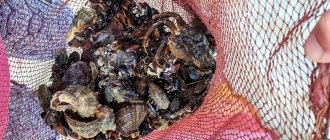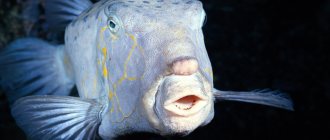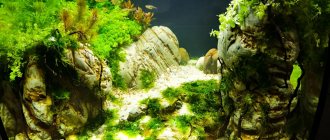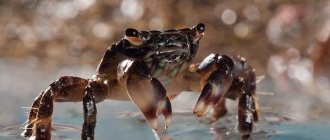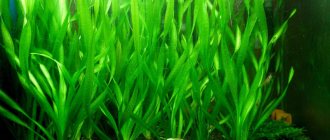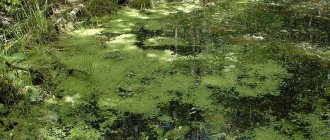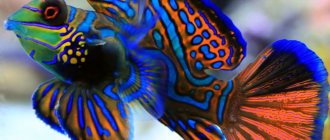Today, science knows 93 families of crabs. They include about 7 thousand species. Among them there are small ones, no larger than a spider, and truly huge ones. There are poisonous and crabs with unusual appearance. These include varieties that are kept in home aquariums.
In this article we will look at the most popular crabs, photos and varieties of these marine inhabitants.
general description
These animals are classified as crustaceans and belong to the order Arthropods. Representatives of all varieties of crabs (the names and photos of some are presented in the review) have 10 limbs, thanks to which they are able to move quite quickly. In addition, they have a pair of claws. They are larger than the other limbs and are sometimes asymmetrical. Crab claws serve two functions. The first is eating food. They are powerful and sharp enough to tear off chunks of food. In addition, the claws are weapons that help them protect their lives and compete with their brothers. Often in such battles the animal may lose one limb. However, pretty soon a new one grows in its place. This explains the asymmetry of the claws.
Limbs can have different shapes. It depends on the type of crab. Some have the last pair of legs shaped like oars. Thanks to this feature, they swim faster than their relatives.
The body of these animals also differs depending on the type. Some representatives of certain varieties of crabs have a round shape, others are triangular. It is noteworthy that in nature there are even individuals with a square body. It, in turn, smoothly passes into the cephalothorax. This part of the body got its name due to the fusion of the chest and head parts. The eyes are located on stalk-like processes. The body of this animal is protected by a durable chitinous shell. It serves as a kind of exoskeleton for the crab, which protects the internal organs from possible damage. During periods of molting, the crab's protective cover becomes soft. During this process, new, durable chitinous plates are formed. The animal sheds its old shell.
Russian crabs
The most valuable type of crab for fishing is the blue one. This crustacean is large in size and weighs up to 5 kilograms. This type of crab got its name from the blue spots located on its body. However, the predominant color in its color is brown.
This type of arthropod is found in the Sea of Okhotsk and Bering Sea. Interestingly, the color of these crabs differs depending on their habitat. Specimens from the Sea of Okhotsk have a brighter color than specimens from the Bering Sea.
In addition to the blue crab, other species are also found in Russia. Not all of them are of commercial importance, but they are no less interesting animals.
Bizarre exotica
The Chinese mitten crab was brought to Europe from the Yellow Sea. Its name fully corresponds to its appearance - the claws are covered with thick dark gray hairs. The seven-centimeter shell itself is olive or light brown. The Japanese variety is darker in color. The reputation of shaggy crabs is greatly damaged by the fact that they carry a dangerous disease - the crayfish plague. In addition, this furry-armed “vandal” can go far into rivers and destroy dams with its burrows. But Chinese crab also has its advantages - in its historical homeland it is considered a delicacy.
Funny coconut crabs are least similar to members of their family in both appearance and behavior. They received another name, palm thief, for their manner of collecting shiny objects and hiding them in their hole. By the way, only young individuals, up to 5 years old, lead a marine lifestyle. For the remaining half a century, the palm thief lives and feeds on land. The diet includes coconuts, fruits and even small rodents, because the size of an adult individual reaches 40 centimeters. It reaches its maximum length by the age of 38, stops molting and does not change its spectacular multi-colored color until the end of its life. During the day, the palm thief hides in a shelter, going for prey in the cool part of the day.
Kamchatka crabs
This species has long been under the supervision of both scientists and ordinary lovers of marine animals. And this is not at all accidental. Kamchatka crabs are quite rare and unusual creatures. They are one of the largest arthropods. It is noteworthy that the name “Kamchatka crab” does not mean one specific species, but several. All of them live in the Far East. The main types of Kamchatka crab are:
- equal-spined crab;
- crab blue;
- barbed;
- snow crab Opilio;
- Baird's snow crab;
- quadrangular hairy;
- Red snow crab.
marble crab
This species has a square, flat shell. Its distinctive features are its agility and tiny size. This animal breathes using gills. It is noteworthy that its claws are different from each other. The right limb has large curved teeth. However, the left claw has tightly interlocking small teeth. The legs of this arthropod are completely covered with hair. The color of the shell can vary from green to purple. At the same time, the pattern on the shell is externally similar to the waves of marble, for which the animal got its name.
This crustacean lives, as a rule, in the coastal zone. Marbled crabs can often be found basking on rocks.
Taste characteristics
It is not for nothing that crab meat is considered an exquisite delicacy. These arthropods are a source of valuable nutritional product with a pleasant taste.
Features of the taste of crab meat
Gourmets claim that crab meat is in no way inferior in taste to lobsters and lobsters.
Crab meat is different:
- juiciness;
- sweetish taste;
- delicate consistency;
- delicate and refined taste, which is preserved even when canned.
Crab meat has a specific sweetness due to glycogen, a special carbohydrate contained in large quantities in this product.
Which part of crab tastes better?
When looking at a crab, many people who are inexperienced in delicacies ask themselves the question: where is the meat hidden in this arthropod hidden in its shell?
The crab has 4 pairs of claws, and the first pair, the front pair, serves as its “hands,” with which it grabs prey. The crab moves with the help of its rear claws. Carbides - often confused with crabs - have 5 pairs of claws.
Considering how little meat can be obtained from one crab, it is easy to guess that this product is not found in the “crab sticks” sold at an affordable price in every grocery store.
Crab meat contains:
- claws;
- legs (phalanxes);
- in the abdominal area.
Gourmets believe that the most delicious crab meat is found at the junction of the limbs with the body.
Blue crab
The width of the shell of representatives of this species of crab can reach 20 centimeters. Moreover, males are larger than females. The weight of adult animals can reach 1-1.2 kilograms. Blue crabs have brown, gray and blue shell colors. At the same time, there are several orange spikes on it. They serve as protection for this arthropod. Each spine can reach a size of 7-8 cm. The lower part of the shell and abdomen of the blue crab is light in color.
The claws of these creatures have different shades. It depends on the sex of the animal. In males they are bluish, and in females they have a reddish tint.
Blue crab is of particular value due to the taste of its meat. It is considered a delicacy. For this reason, this type of crab was subjected to active extermination. Today it is listed in the Red Book.
Health benefits and harms
Crabs are not only tasty, but also healthy - they are a valuable dietary product that contains a huge amount of nutrients.
Nutritional value of 100 g crab meat:
- calorie content – 96.4 kcal;
- proteins – 16 g;
- fats – 3.6 g.
Crab meat contains a lot of vitamins - A, PP, C and group B, it contains iodine, glycogen, amino acids and minerals. Due to its high nutritional value, crab meat has a positive effect on the body and health.
Nutritionists advise consuming crab meat for:
- Cardiovascular diseases. Crab contains omega-3 and omega-6 fatty acids, which normalize blood cholesterol levels.
- Obesity. Crab meat contains a lot of protein and little fat, so it is part of many diets.
- Disorders of the gastrointestinal tract. The product is digested easier and faster than pork and beef.
- Diseases of the thyroid gland. Crab meat contains a lot of iodine, so it is recommended for thyroid problems.
- With a decrease in male libido. The product stimulates testosterone production.
When consuming crab meat, you need to remember the following points:
- Crabs live on the bottom, feeding on carrion and anything else they find. Therefore, their meat may be contaminated with bacteria. Moreover, it may even be radioactive. Therefore, you should buy the product only from reliable manufacturers.
- Crab meat is a perishable product. You can store it even frozen for no more than two days.
- To protect yourself from infection, crab meat is cooked.
Herbal crab
This species is widespread on the Black Sea coast. The name of this animal is due to its unique camouflage abilities. He can literally dissolve in algae. It eats mainly carrion. He clears the coastal zone of it.
The shell of this crab is colored green. The abdomen is pale orange or white. The size of the shell does not exceed 8 centimeters in length and 6 in width.
sand crab
These animals are small in size. They love to bury themselves in the sand, which is why they got their name. They have an oval shell that can reach 4 centimeters in width. His legs are short, which, however, does not prevent him from moving quickly. A distinctive feature of this animal is its ability to swim in the water column.
Large claws. They seem disproportionate for a crab of this size. The claw fingers are dark in color. Sometimes they are black.
Aquarium varieties of crabs
These unique crustaceans have become favorite pets among aquarium enthusiasts. Today, in almost any pet store you can buy varieties of aquarium crabs that survive well in an artificial environment. When choosing such a pet, it is worth considering its size and the temperature of the water in which it will be kept. For some types of crabs, aeration and warm water at least 20-25 degrees Celsius are very important. Animals brought from the northern regions, on the contrary, require cooler water.
Names of varieties of crabs intended for keeping in aquariums:
- Dutch crab. Ideal for beginners. Easy to care for. The optimal water temperature is 24-25 degrees Celsius. The animal does not need dry land.
- Leopard crab. Got its name for its bright color. Goes well with aquarium fish. Like Dutch crab, it does not require sushi. Neighborhood with frogs is undesirable. The optimal temperature is 22-28 degrees Celsius.
Crustaceans are omnivores. In the wild, they are assigned the role of coastal orderlies. Unfortunately, today some of them are on the verge of extinction. As a rule, the person is to blame for this.
Reproduction at home
Crabs do not breed in captivity. This is due to the difficulty of creating conditions for reproduction and the aggressiveness of crustaceans. In the aquarium, they constantly fight for territory, food, and females.
Fights can result in self-harm and death of pets. In nature, crabs have more space, which affects their level of aggressiveness.
If conditions are as close as possible to natural during the breeding season, and the female and male have mating games, small larvae similar to plankton hatch (are born) from the eggs.
It is imperative to resettle the female with the eggs so that the larvae can go through multiple molts and grow. The water in a separate tank should be salty to prevent pathologies in the offspring. From birth to maturity, the crab molts once every 10 days.
